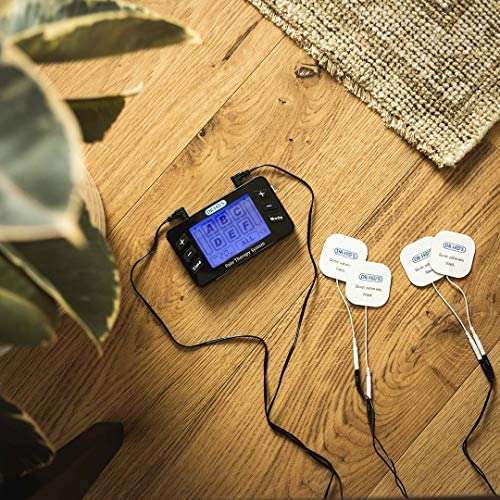Creep and Stress Relaxation
Creep
When subjected to load, all elastomers exhibit an increasing deformation with time, know as creep. This occurs at any stress level and takes place in compression, tension and shear loadings and varies for each type of loading. In service, creep can be minimized by using low working stresses and avoiding high temperatures. No rapid method has been developed for its measurement because there is no know way of accelerating time effects without introducing inaccuracies in predicting rate of creep.
Creep is usually expressed in percent of deformation after the part is loaded rather than the unloaded dimension. Determination of creep takes place after some arbitrary short time interval such as one minute, five minutes or even on day after applying the load. Creep, expressed as a percent, equals total deformation minus initial deformation divided by initial deformation, time 100. In the initial stage, creep occurs at a relatively high rate and then continues at a very slow rate. Failure can occur after an extended period of high stress. Figure 1 illustrates characteristic creep curves. AB in the high stress creep curve indicates the failure phase where actual fracture can occur.

FIG 1
Below the failure zone, when stress is removed, the part will attempt to return to its original dimension; however, it will never fully recover. The unrecoverable portion is called permanent set. Loads which allow intermittent recovery will exhibit less creep than if continuously loaded. However, continuous vibratory loading will increase creep since internal heat is generated.
Strain relaxation is important in applications such as engine mountings since it influences the alignment of various parts of the equipment. Yet, it is difficult to predict these properties for a given application without resorting to simulated service tests because several factors have an important effect on them. Chief among these are amount of strain, operating temperature and changes in these two resulting from vibration.
The relative effects of variables have not yet been correlated so that results of tests under one set of conditions will permit accurate prediction of creep under another set of conditions. It has been established that the higher the initial strain, the higher the creep; also, the higher the temperature, the higher the creep. In general, the degree of creep is dependent on the type of strain. Creep is greater under tension strain then under equal compression strain. Creep is also increased more under dynamic loading then under static loading.
The creep characteristics of two urethane polymers, over a ten-month period, are shown on Figure 2. After approximately 3000 hours (18 weeks) creep reaches a plateau and becomes almost constant. The amount of creep is a function of stress level. This involves a stress of 400 psi. Creep will continue at a very low rate after this point, which is the classic behavior of elastomers.

FIG 2
The actual creep of the 95durometer A compound was 0.033 inches after ten months compared with and initial deflection of 0.200 for sample 0.500 inches thick. After the initial loading, creep is only 6.6%.
The creep rate of rubber materials of all kinds increases at elevated temperatures. Where dimensions are important, operating temperatures must be kept below 150F (66C).
Stress Relaxation
Stress relaxation is the loss in stress when it is held at a constant strain over a period of time. It is usually expressed in terms of percent stress remaining after an arbitrary length of time at a given temperature.
There is no standard method for determining stress relaxation. However, many laboratories have developed relaxation cells. These cells utilize the compression set specimen and the test procedure parallels ASTM D-395 Method B. Stress relaxation for 50A urethane is shown in Figure 3.

FIG 3
When subjected to load, all elastomers exhibit an increasing deformation with time, know as creep. This occurs at any stress level and takes place in compression, tension and shear loadings and varies for each type of loading. In service, creep can be minimized by using low working stresses and avoiding high temperatures. No rapid method has been developed for its measurement because there is no know way of accelerating time effects without introducing inaccuracies in predicting rate of creep.Creep is usually expressed in percent of deformation after the part is loaded rather than the unloaded dimension. Determination of creep takes place after some arbitrary short time interval such as one minute, five minutes or even on day after applying the load. Creep, expressed as a percent, equals total deformation minus initial deformation divided by initial deformation, time 100. In the initial stage, creep occurs at a relatively high rate and then continues at a very slow rate. Failure can occur after an extended period of high stress. Figure 1 illustrates characteristic creep curves. AB in the high stress creep curve indicates the failure phase where actual fracture can occur.Below the failure zone, when stress is removed, the part will attempt to return to its original dimension; however, it will never fully recover. The unrecoverable portion is called permanent set. Loads which allow intermittent recovery will exhibit less creep than if continuously loaded. However, continuous vibratory loading will increase creep since internal heat is generated.Strain relaxation is important in applications such as engine mountings since it influences the alignment of various parts of the equipment. Yet, it is difficult to predict these properties for a given application without resorting to simulated service tests because several factors have an important effect on them. Chief among these are amount of strain, operating temperature and changes in these two resulting from vibration.The relative effects of variables have not yet been correlated so that results of tests under one set of conditions will permit accurate prediction of creep under another set of conditions. It has been established that the higher the initial strain, the higher the creep; also, the higher the temperature, the higher the creep. In general, the degree of creep is dependent on the type of strain. Creep is greater under tension strain then under equal compression strain. Creep is also increased more under dynamic loading then under static loading.The creep characteristics of two urethane polymers, over a ten-month period, are shown on Figure 2. After approximately 3000 hours (18 weeks) creep reaches a plateau and becomes almost constant. The amount of creep is a function of stress level. This involves a stress of 400 psi. Creep will continue at a very low rate after this point, which is the classic behavior of elastomers.The actual creep of the 95durometer A compound was 0.033 inches after ten months compared with and initial deflection of 0.200 for sample 0.500 inches thick. After the initial loading, creep is only 6.6%.The creep rate of rubber materials of all kinds increases at elevated temperatures. Where dimensions are important, operating temperatures must be kept below 150F (66C).Stress relaxation is the loss in stress when it is held at a constant strain over a period of time. It is usually expressed in terms of percent stress remaining after an arbitrary length of time at a given temperature.There is no standard method for determining stress relaxation. However, many laboratories have developed relaxation cells. These cells utilize the compression set specimen and the test procedure parallels ASTM D-395 Method B. Stress relaxation for 50A urethane is shown in Figure 3.
In materials science, stress relaxation is the observed decrease in stress in response to strain generated in the structure. This is primarily due to keeping the structure in a strained condition for some finite interval of time hence causing some amount of plastic strain. This should not be confused with creep, which is a constant state of stress with an increasing amount of strain.
Since relaxation relieves the state of stress, it has the effect of also relieving the equipment reactions. Thus, relaxation has thesame effect as cold springing, except it occurs over a longer period of time.The amount of relaxation which takes place is a function of time, temperature and stress level, thus the actual effect it has on the system is not precisely known, but can be bounded.
Stress relaxation describes how polymers relieve stress under constant strain. Because they are viscoelastic, polymers behave in a nonlinear, non-Hookean fashion.[1] This nonlinearity is described by both stress relaxation and a phenomenon known as creep, which describes how polymers strain under constant stress. Experimentally, stress relaxation is determined by step strain experiments, i.e. by applying a sudden one-time strain and measuring the build-up and subsequent relaxation of stress in the material (see figure), in either extensional or shear rheology.

a) Applied step strain and b) induced stress as functions of time for a viscoelastic material.
Viscoelastic materials have the properties of both viscous and elastic materials and can be modeled by combining elements that represent these characteristics. One viscoelastic model, called the Maxwell model predicts behavior akin to a spring (elastic element) being in series with a dashpot (viscous element), while the Voigt model places these elements in parallel. Although the Maxwell model is good at predicting stress relaxation, it is fairly poor at predicting creep. On the other hand, the Voigt model is good at predicting creep but rather poor at predicting stress relaxation (see viscoelasticity).
The extracellular matrix and most tissues are stress relaxing, and the kinetics of stress relaxation have been recognized as an important mechanical cue that affects the migration, proliferation, and differentiation of embedded cells.[2]
Stress relaxation calculations can differ for different materials:
To generalize, Obukhov uses power dependencies:[3]
σ ( t ) = σ 0 1 − [ 1 − ( t / t ∗ ) ( 1 1 − n ) ] {displaystyle sigma (t)={frac {sigma _{0}}{1-[1-(t/t^{*})(1^{1-n})]}}}
where σ 0 {displaystyle sigma _{0}} 
Vegener et al. use a power series to describe stress relaxation in polyamides:[3]
σ ( t ) = ∑ m , n A m n [ ln ( 1 + t ) ] m ( ϵ 0 ′ ) n {displaystyle sigma (t)=sum _{m,n}^{}{A_{mn}[ln(1+t)]^{m}(epsilon ‘_{0})^{n}}}
To model stress relaxation in glass materials Dowvalter uses the following:[3]
σ ( t ) = 1 b ⋅ log 10 α ( t − t n ) + 1 10 α ( t − t n ) − 1 {displaystyle sigma (t)={frac {1}{b}}cdot log {frac {10^{alpha }(t-t_{n})+1}{10^{alpha }(t-t_{n})-1}}} 


The following non-material parameters all affect stress relaxation in polymers:[3]
- Magnitude of initial loading
- Speed of loading
- Temperature (isothermal vs non-isothermal conditions)
- Loading medium
- Friction and wear
- Long-term storage
See also
[
edit
]
References
[
edit
]
The relationship between strain and stress is described by the material’s stress-strain curve. Figure 1 shows typical stress-strain curves from polymer thermoplastic and thermoset rubber materials from a uniaxial tension test. Both the materials have plastic strain properties where when the material is stretched beyond the elastic limit there is some permanent deformation and the material does not fully return to its original undeformed condition.
Figure 1: Stress-Strain Curves from Thermoplastic and Thermoset Materials
The plastic strain is the area between the loading and unloading line in the graphs. In automotive applications this permanent plastic strain is observed more easily in under the hood components located near the engine compartments because of the presence of high temperature conditions. If a polymer part such as intake manifold is stressed to a certain state and held for a period of time then some of the elastic strain converts to plastic strain resulting in observations of permanent deformation in the component. There are two physical mechanisms by which the amount of plastic strain increases over time, 1) Stress relaxation and 2) Creep.
Creep is an increase in plastic strain under constant force, while in the case of Stress relaxation; it is a steady decrease in force under constant applied deformation or strain. Creep is a serious issue in plastic housings or snap fit components, while Stress relaxation is a serious issue in sealing elements. Experimental studies on creep behavior of plastics is carried out using the tensile creep test. The loading is purely under static conditions according to ISO 899-1. The specimens used in the testing are generally as prescribed as 1A and 1B in ISO 527 and ASTM D638. These specimens correspond to the generalized description of specimens according to ISO 3167.
Figure 2: Graphical Representation of Creep and Stress Relaxatio
Figure 3 shows the results from Creep testing of an HDPE material. In Most Finite Element Analysis software, stress relaxation and creep both can be simulated with the help of experimental test data.
Figure 3: Sample Creep Test Results for an HDPE Material
Creep modulus Ec(t) is used to describe the time dependent material behavior of plastics. It is defined as the ratio of the applied stress and time-dependent deformation at time (t):
Ec(t) = Stress/Strain(t) (1)
Creep rate Ec(t)/dt is used to describe the long-term creep behavior, it is defined from the ratio of deformation or strain increase with respect to time
Ec(t)/dt = d(strain)/d(t) (2)
Creep Stages:
1) Primary Creep: The process starts at a rapid rate and slows with time. Typically it settles down within a few minutes or hours depending upon the nature of material. Strain rate decreases as strain increases.
2) Secondary Creep: At this state the process has a relatively uniform rate and is known as steady state creep. Strain rate is minimum and constant. Balance between between recovery and strain hardening. Fracture typically does not occur during this stage.
3) Tertiary Creep: This stage shows an accelerated creep rate and terminates with failure or a fracture. It is associated with both necking and formation of voids.
An O-ring or a Seal under energized conditions must maintain good contact force throughout the functional life of the products. Contact force is generated between the mating surfaces when one of the mating surfaces deflects and compresses the seal surface. In order for the sealing to remain effective the contact surfaces must return to the undeformed original position when the contacting force is removed or when there are vibratory displacements between the contacting surfaces. Under these conditions the deflection of the sealing element must be fully recoverable and so hyperelastic by nature. If there is any unrecoverable strain in the material the performance of the seal is diminished and leak would occur from between the surfaces. The key to designing a good sealing element is that the good contact force is as high as possible while at the same time ensuring that the deflection remains hyperelastic in nature. This requires the use of a material with a good combination of force at a desired deformation characteristic. Figure 4 shows the family of curves for a stress relaxation experiment carried out at multiple strain levels.
Figure 5 shows the results from a compression stress relaxation test on a rubber material. The results show the test data over a 3 day period.
Figure 4: Stress Relaxation Curves at Multiple Strain Levels
The initial rapid relaxation and decrease in force occurs due to chemical process related degradation of the material, while at longer duration and time frames the drop in force is due to physical relaxation. Numerous studies have shown that the relaxation mechanism in polymers and rubbers is dependent on many factors as the nature and type of polymer, fillers and ingredients used, strain levels, strain rates and also temperature. The rate of relaxation is generally found to decrease at lower levels of filler loading and the rate of stress relaxation increases at higher levels of filler loading. This is attributable to polymer filler interactions.
Figure 5: Sample Continuous Compression Test Results for Nitrile Elastomer Material
The molecular causes of stress relaxation can be classified to be based on five different processes.
1). Chain Scission: The decrease in the measured stress over time is shown in in Figures 4 and 5 Where, 3 chains initially bear the load but subsequently one of the chains degrade and break down.
2). Bond Interchange: In this particular type of material degradation process, the chain portions reorient themselves with respect to their partners causing a decrease in stress.
3). Viscous Flow: This occurs basically due to the slipping of linear chains one over the other. It is particularly responsible for viscous flow in pipes and elongation flow under stress.
Figure 6: Chain Scission in an Elastomeric Material
4). Thirion Relaxation: This is a reversible relaxation of the physical crosslinks or the entanglements in elastomeric networks. Generally an elastomeric network will instantaneously relax by about 5% through this mechanism.
5). Molecular Relaxation: Molecular relaxation occurs especially near Tg (Glass Transition Temperature). The molecular chains generally tend to relax near the Tg.
References:
1. Sperling, Introduction to Physical Polymer Science, Academic Press, 1994.
2. Ward et al., Introduction to Mechanical Properties of Solid Polymers, Wiley, 1993. 3. Seymour et al. Introduction to Polymers, Wiley, 1971.
4. Ferry, Viscoelastic Properties of Polymers, Wiley, 1980.
5. Goldman, Prediction of Deformation Properties of Polymeric and Composite Materials, ACS, 1994.
6. Menczel and Prime, Thermal Analysis of Polymers, Wiley, 2009.
7. Pete Petroff, Rubber Energy Group Class Notes, 2004.
8. ABAQUS Inc., ABAQUS: Theory and Reference Manuals, ABAQUS Inc., RI, 02.
9. Dowling, N. E., Mechanical Behavior of Materials, Engineering Methods for Deformation, Fracture and Fatigue Prentice-Hall, NJ, 1999.
10. Srinivas, K., and Dharaiya, D., Material And Rheological Characterization For Rapid Prototyping Of Elastomers Components, American Chemical Society, Rubber Division, 170th Technical Meeting, Cincinnati, 2006.

![{displaystyle sigma (t)={frac {sigma _{0}}{1-[1-(t/t^{*})(1^{1-n})]}}}](https://i0.wp.com/wikimedia.org/api/rest_v1/media/math/render/svg/da33c715d0e417edc13ebcbba6b1473a40a9472b)
![{displaystyle sigma (t)=sum _{m,n}^{}{A_{mn}[ln(1+t)]^{m}(epsilon '_{0})^{n}}}](https://i0.wp.com/wikimedia.org/api/rest_v1/media/math/render/svg/1d847e9c986a28c420f6b1f06792b86477a15534)



